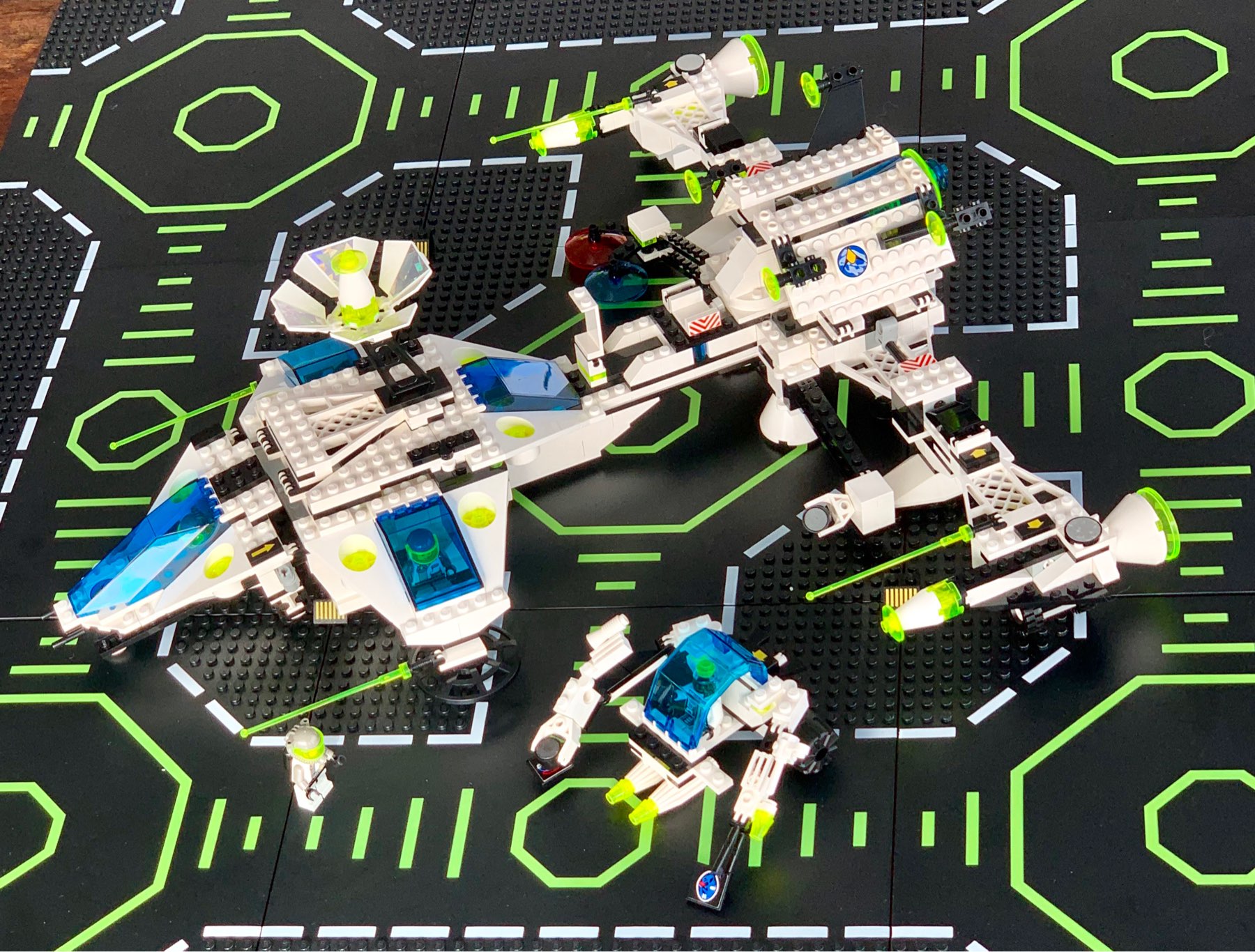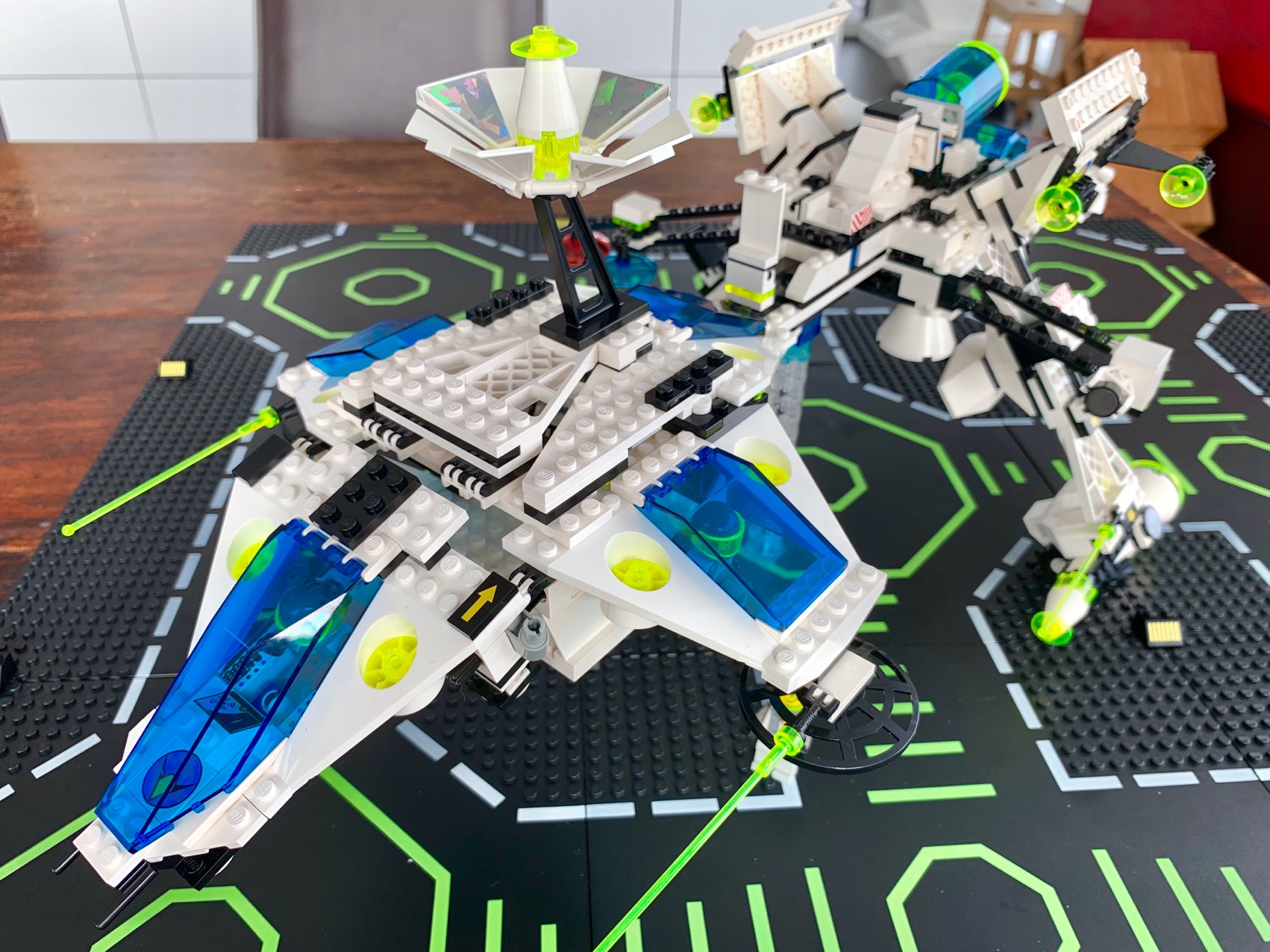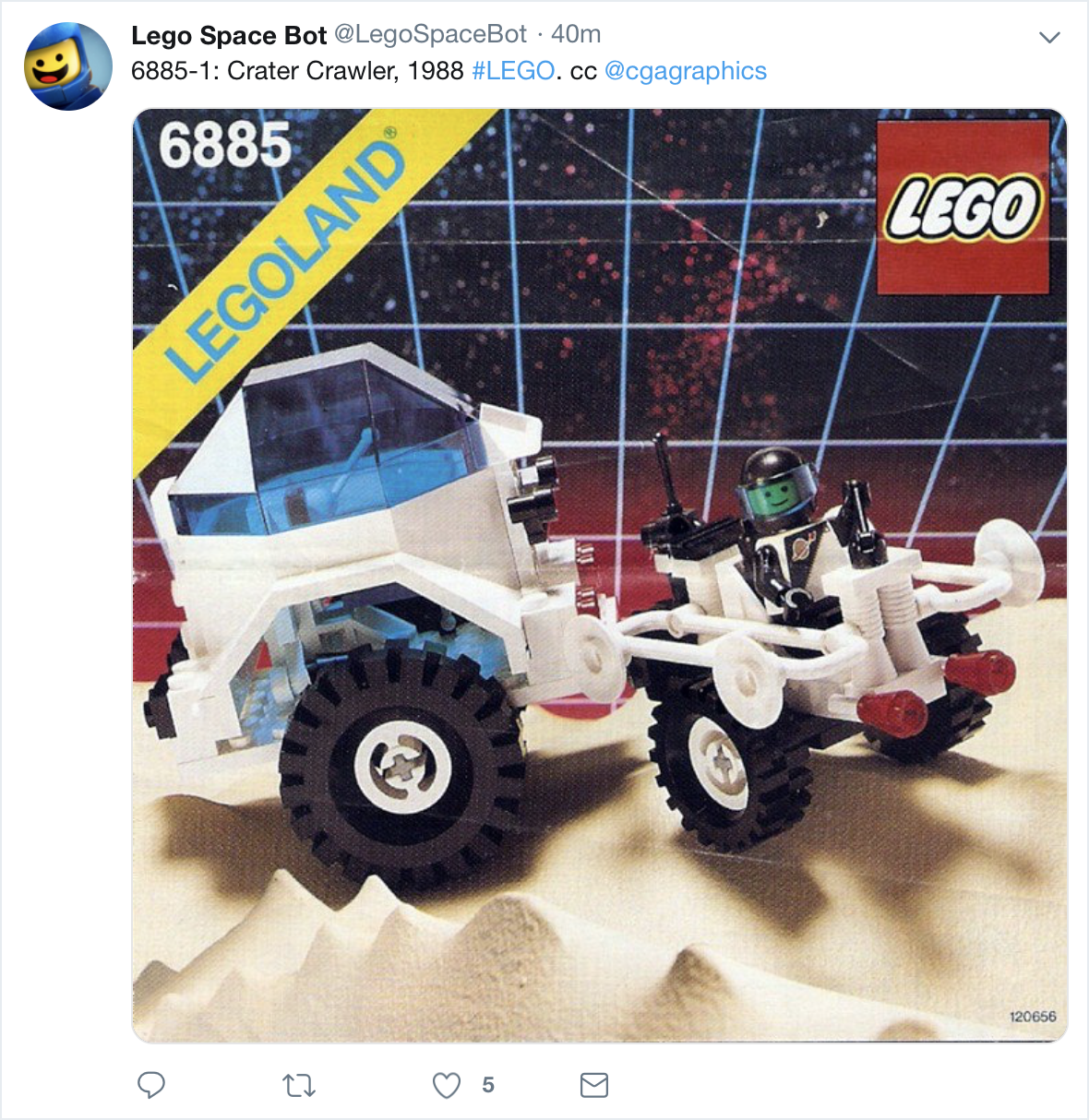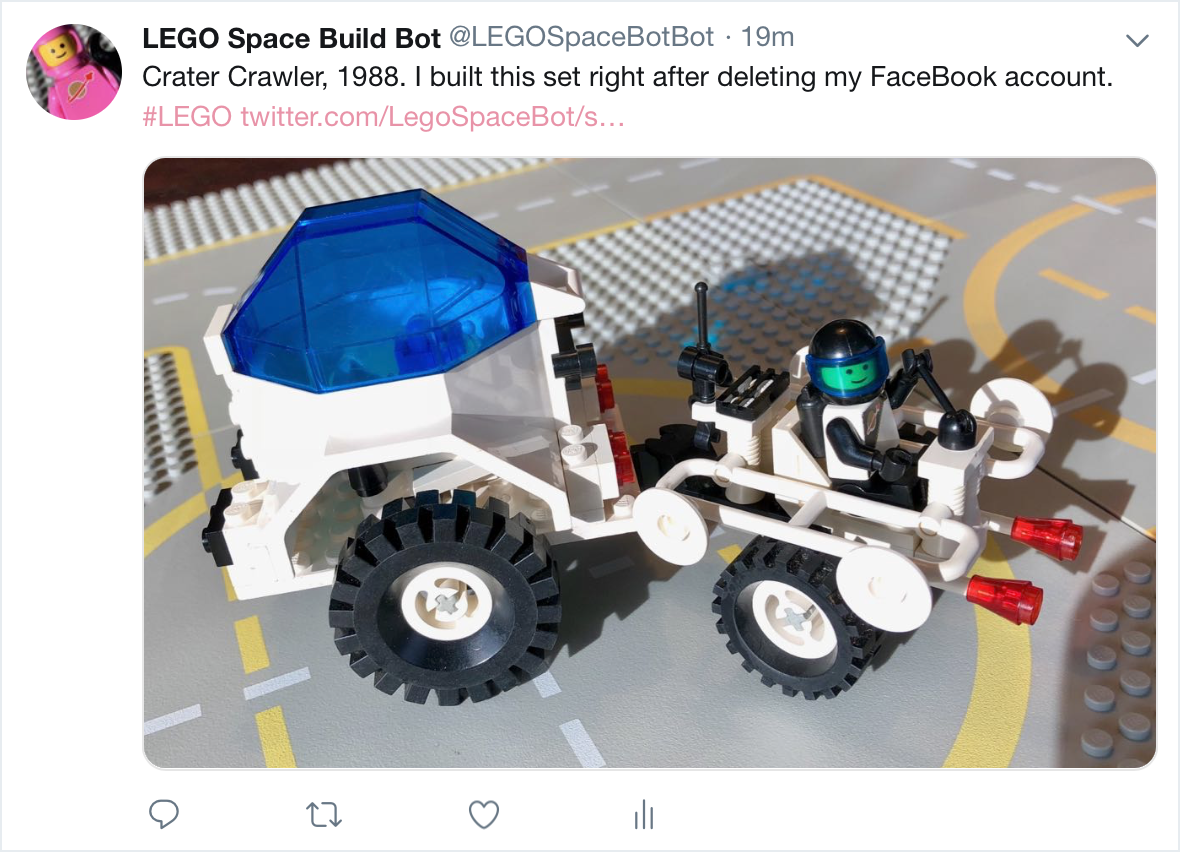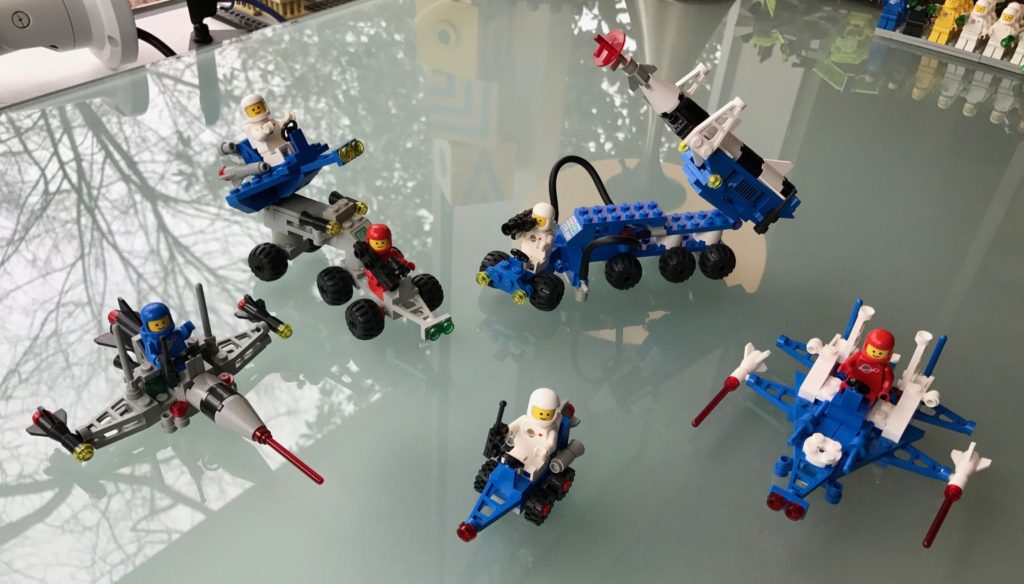
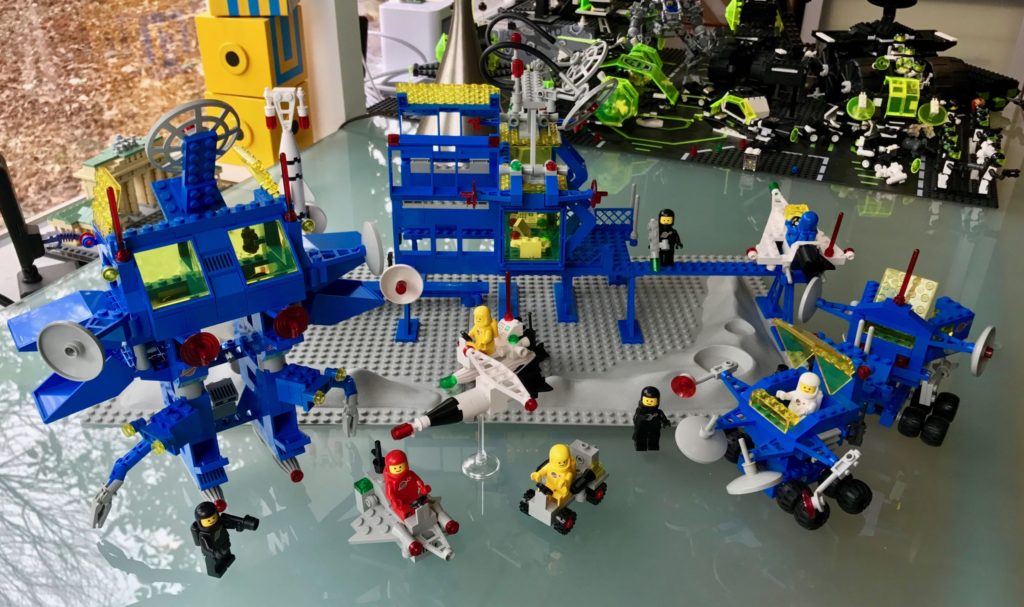
New Parts
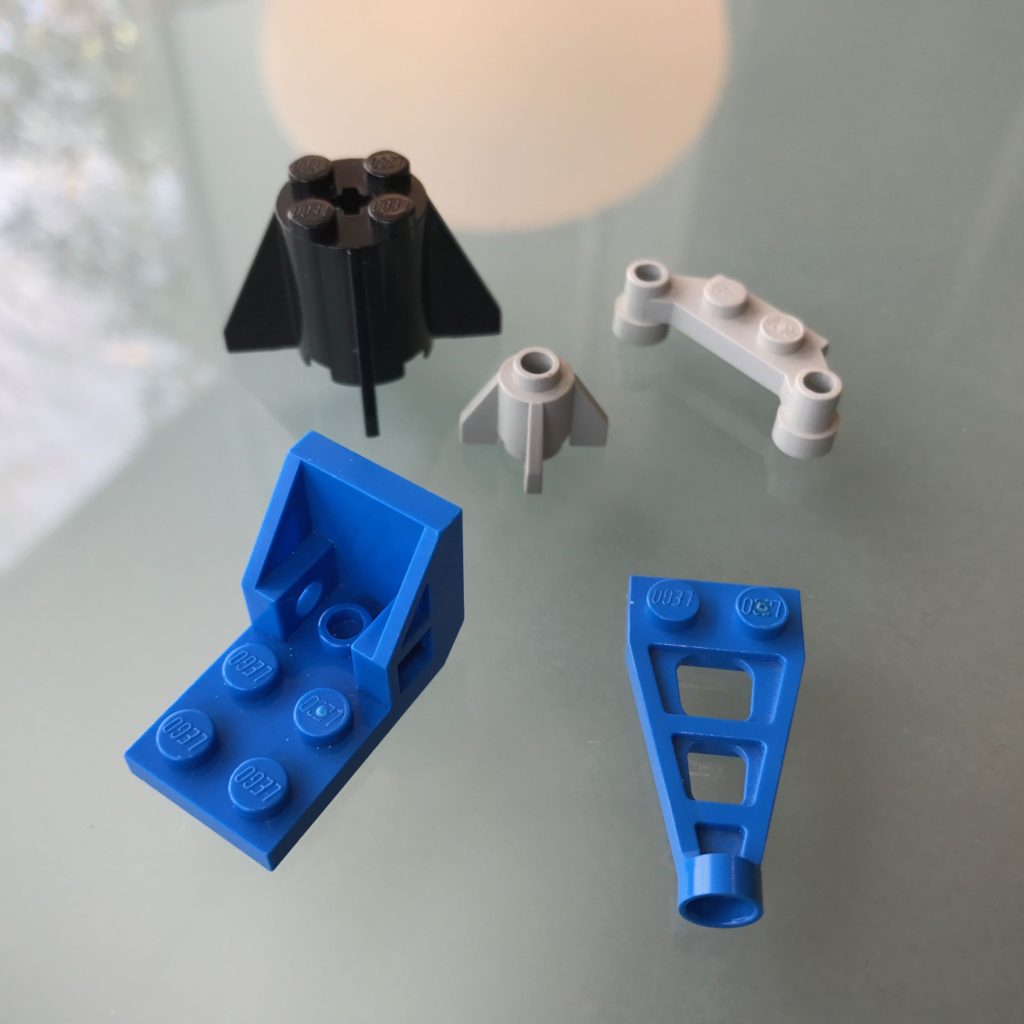
- Blue and Black Spacemen: Join red, white, and yellow
- Brick, Round 1 x 1 with Fins
- Brick, Round 2 x 2 with Fins: Perfect for rockets and thrusters
- Plate, Modified 1 x 4 Offset: offsets by 1/2 stud horizontally
- Plate, Modified 1 x 2 with Long Stud Receptacle (Space Wing): useful as wings or for mounting weapons and sensors
- Bracket 3 x 2 – 2 x 2 (Space Seat): finally a seat that comfortably fits an astronaut with airtanks
Surface Rover (6804)
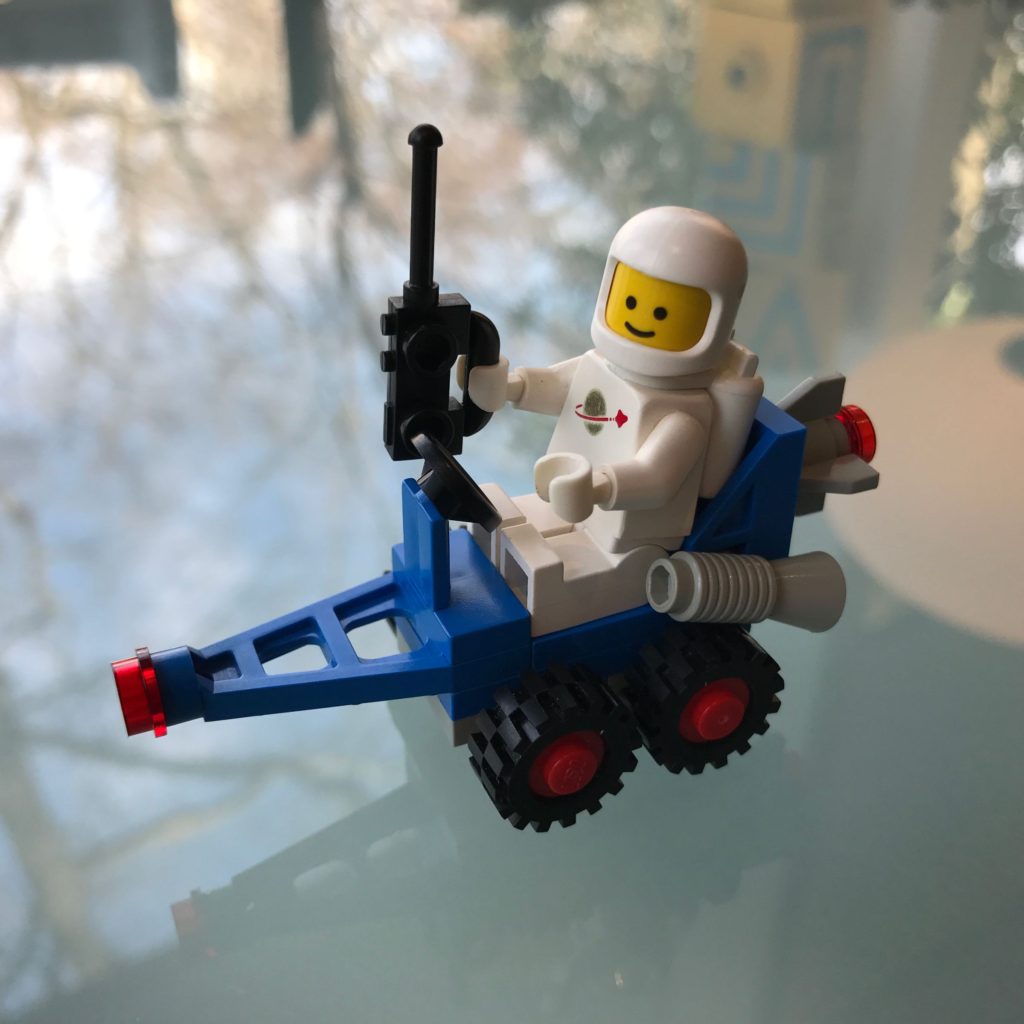
Features: Small rocket-propelled car with one astronaut and a walkie-talkie as an accessory.
Thoughts: This little guy is adorable! Very compact build debuts the new space seat, space wing, and rocket thruster parts.
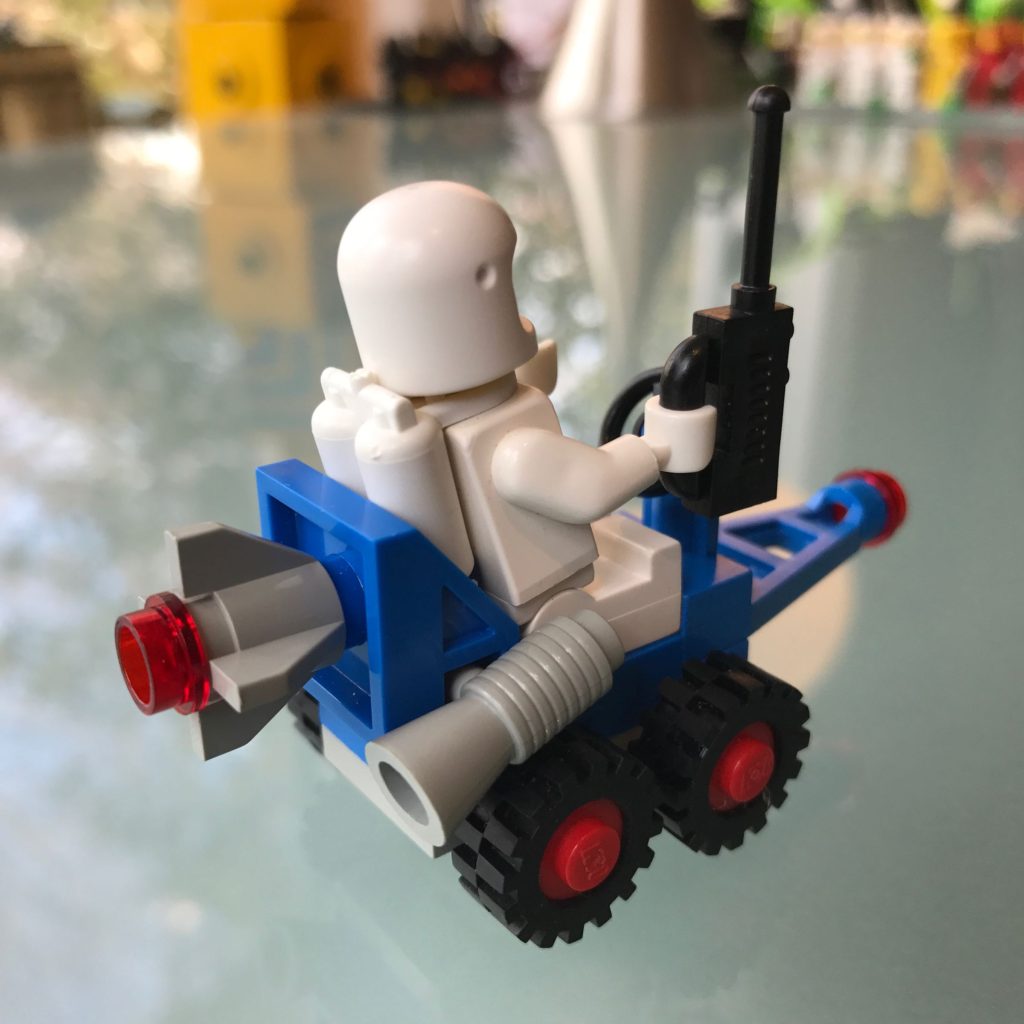
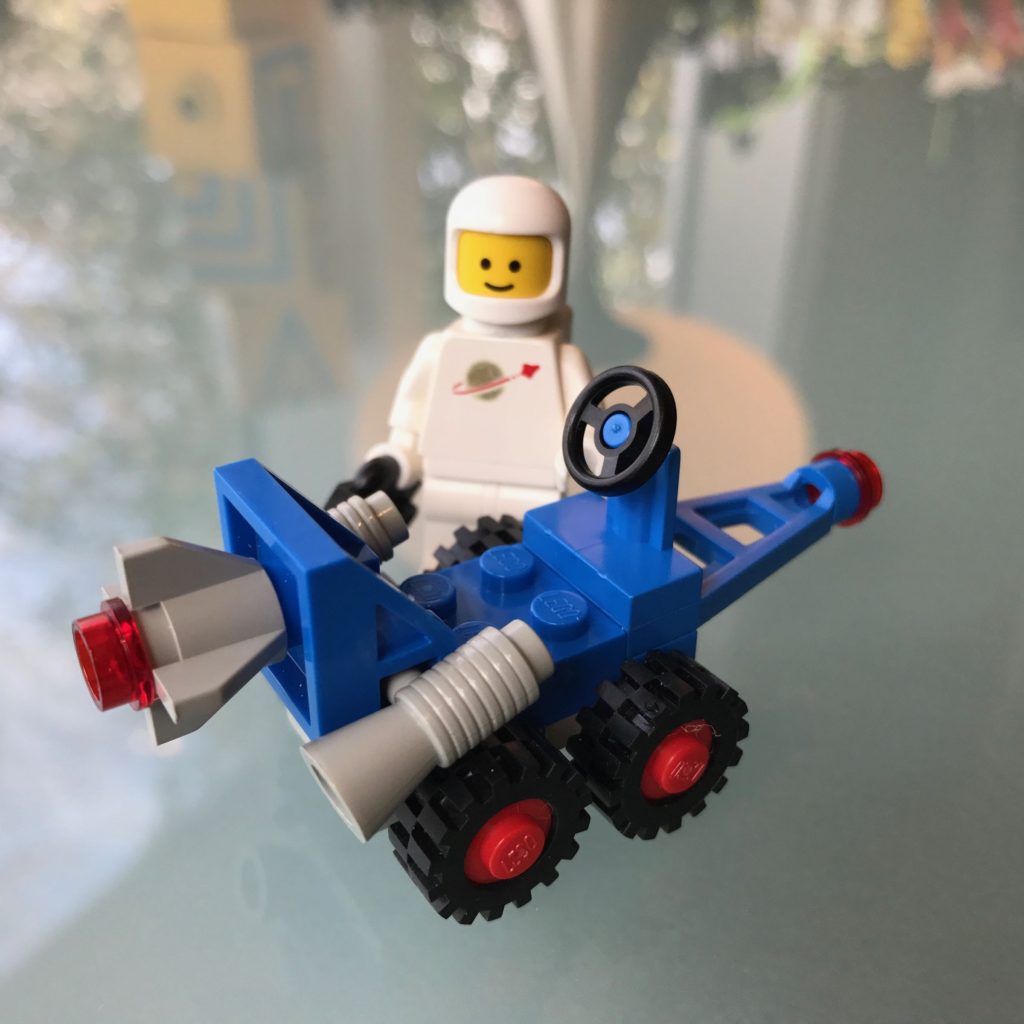
Space Dart I (6824)
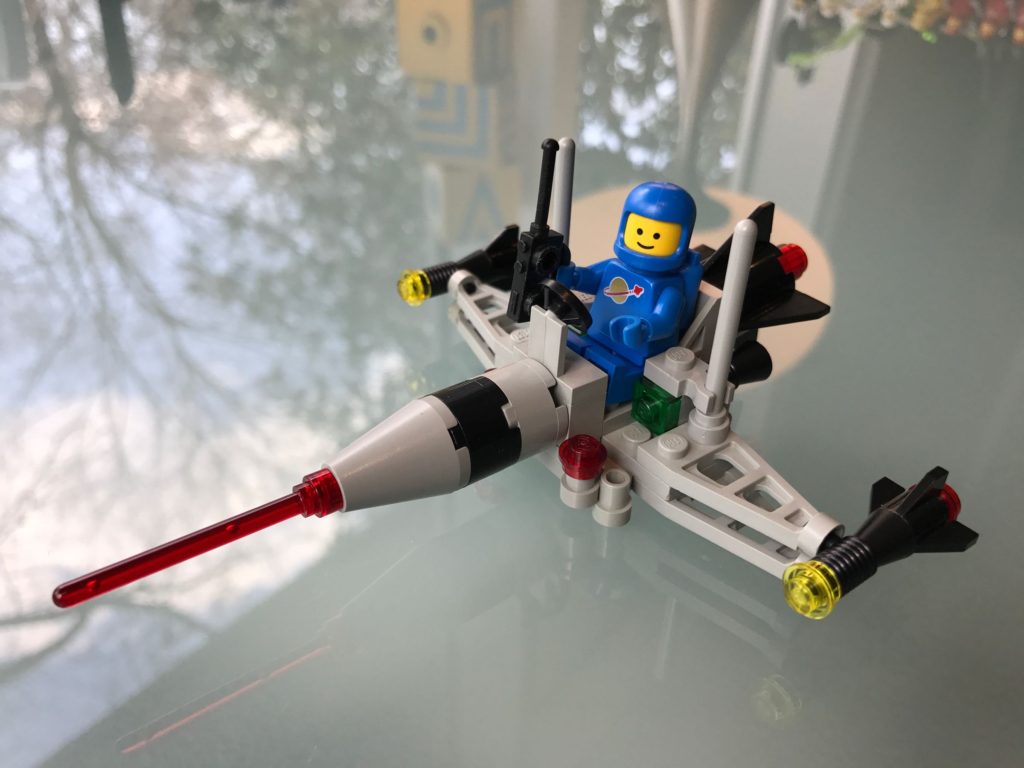
Features: Small needle-nosed plane with dual antennas and one astronaut with a walkie-talkie as an accessory.
Thoughts: This small sleek fighter has thrusters and weapons to spare. First blue astronaut. ❤️ the transparent-red antenna on the nose. Liberal use of the new space wing part.
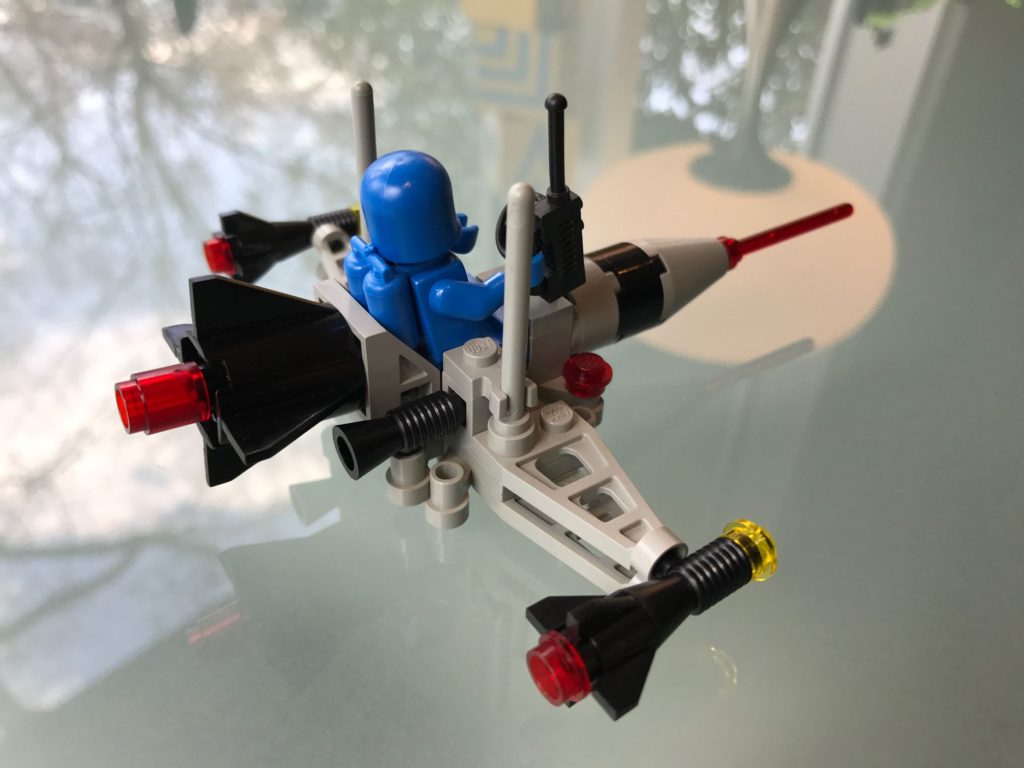
Tri-Star Voyager (6846)
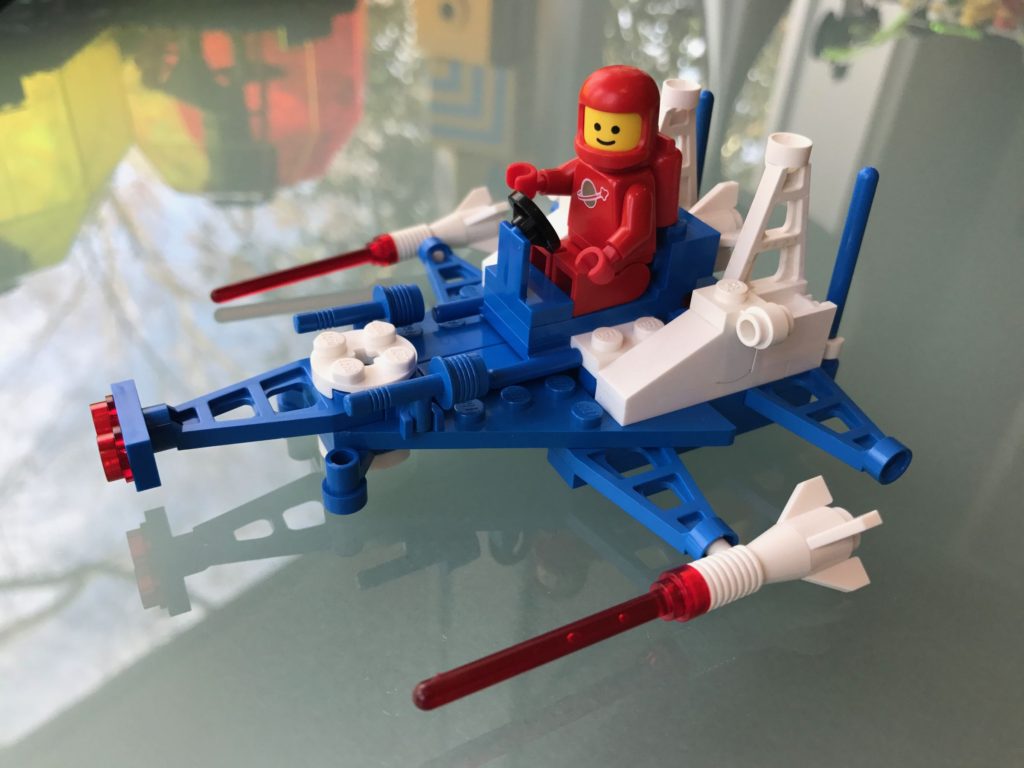
Features: Small blue and white ship with plenty of lasers. The rear white wings fold down to release an escape pod. One astronaut.
Thoughts: Uses seven of the new space wing pieces. I like the detachable escape pod.
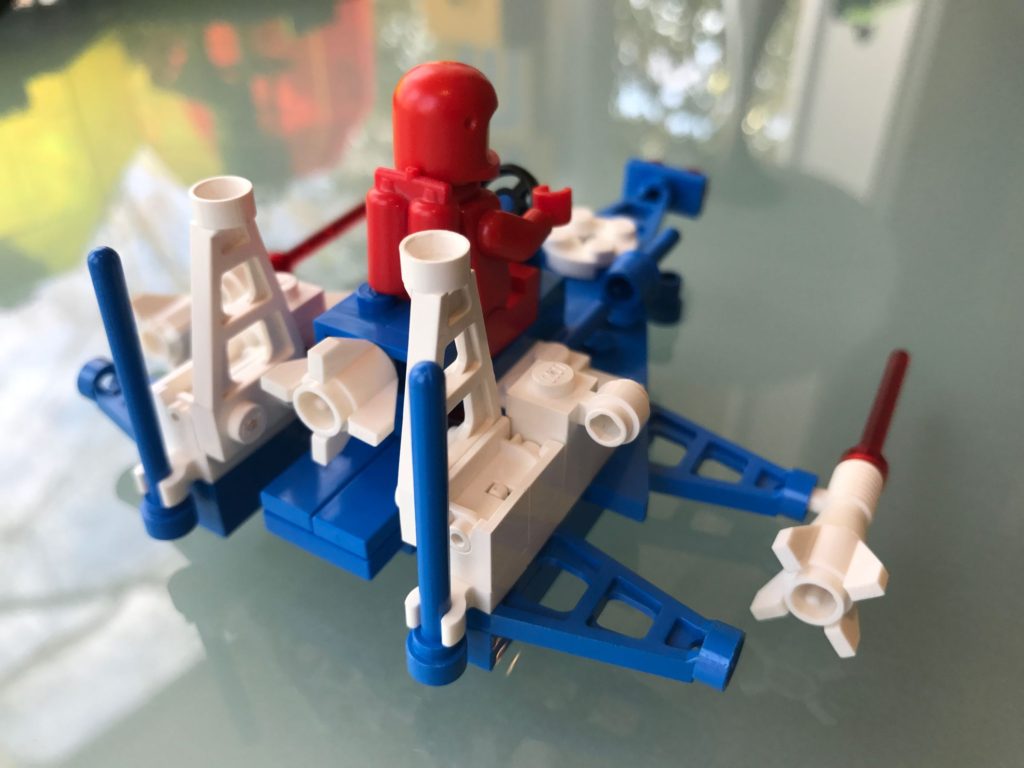
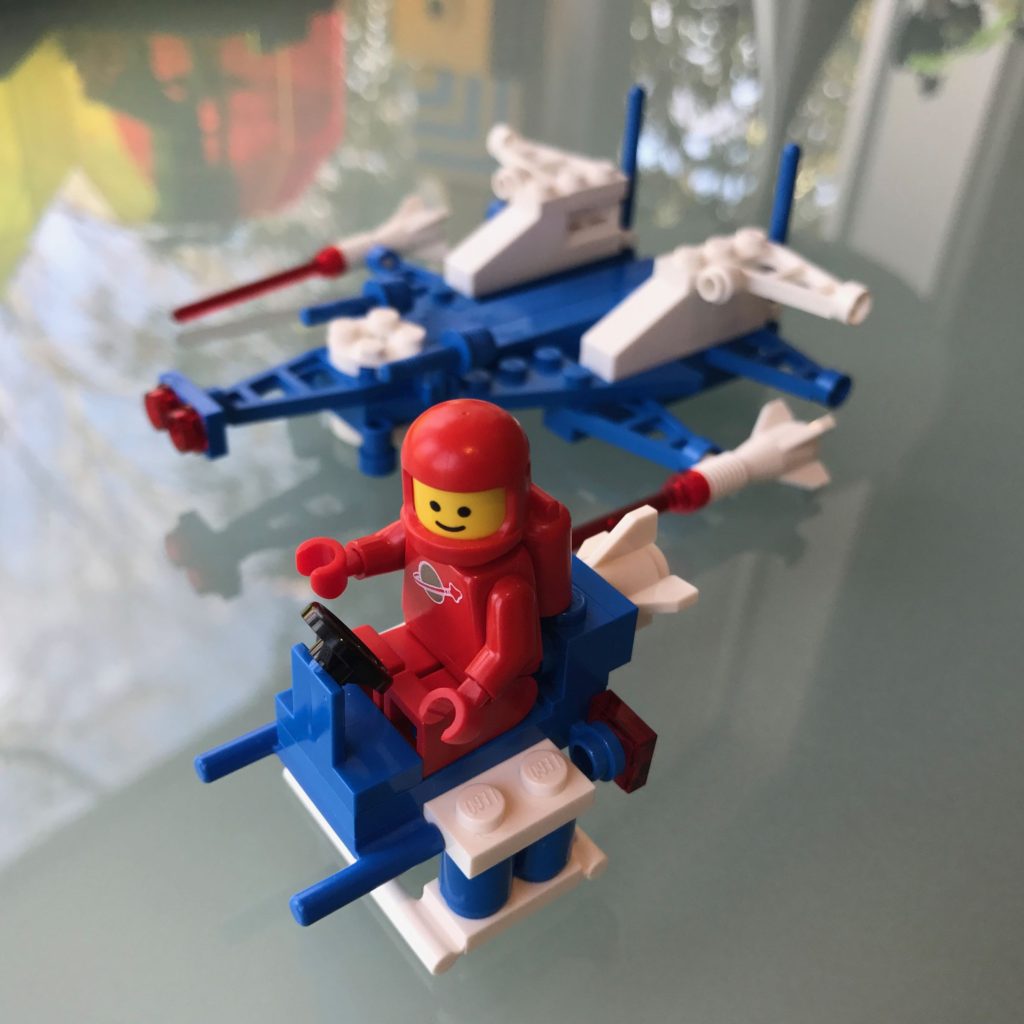
Escape pod
Star Patrol Launcher (6871)
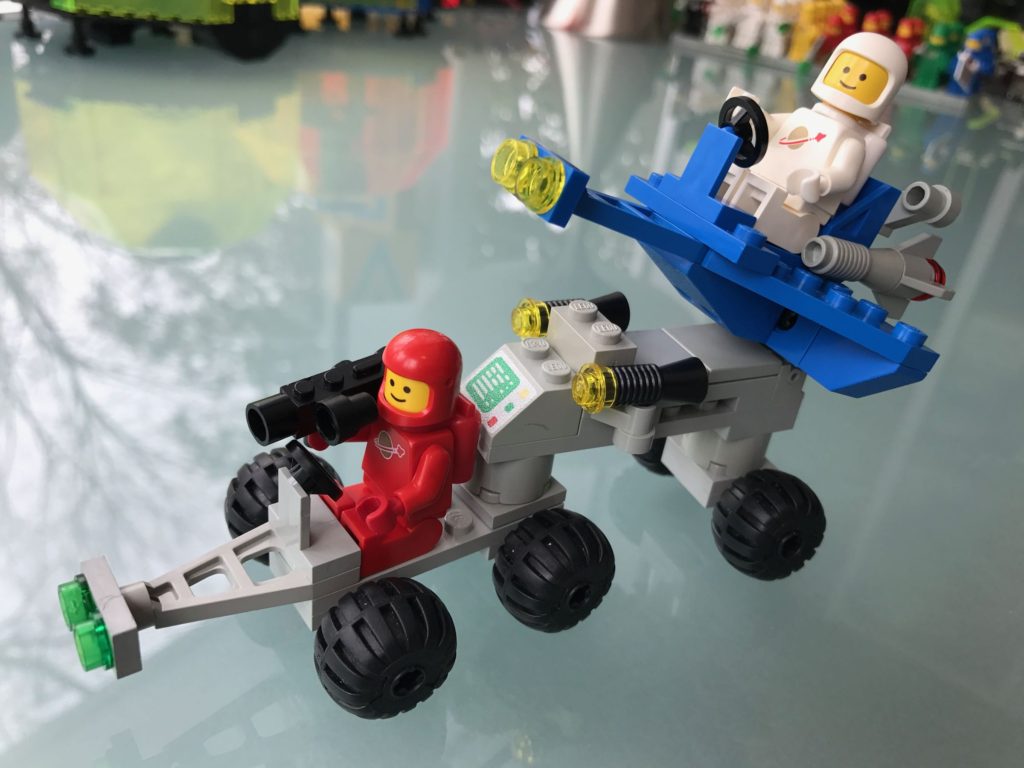
Features: Articulated ground vehicle that launches a small flying wedge. Comes with two astronauts and a video camera/bazooka for an accessory.
Thoughts: Another iteration on the launcher concept. This time with two astronauts, a blue ship, and balloon tires. I like the symmetry between the front ends of the ground vehicle and the spaceship. Bonus points for including a computer terminal on the ground vehicle.
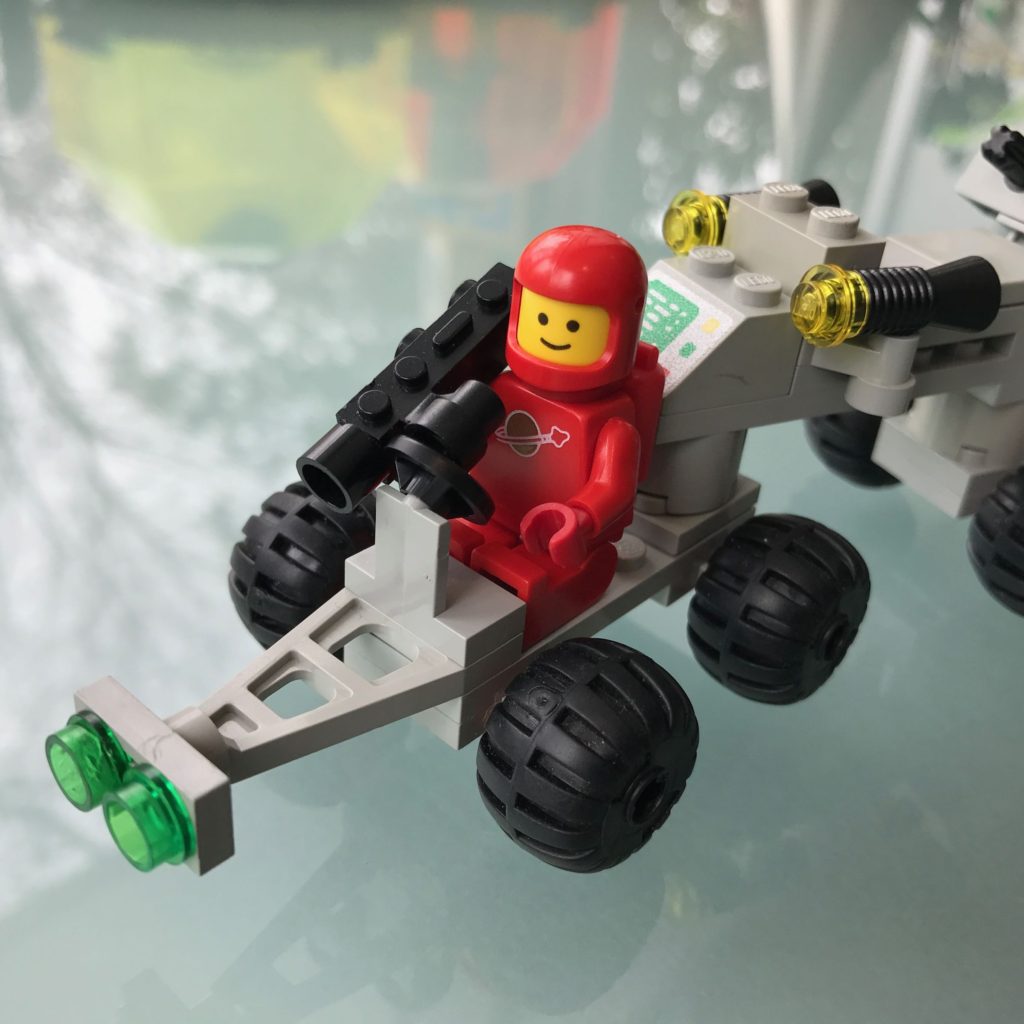
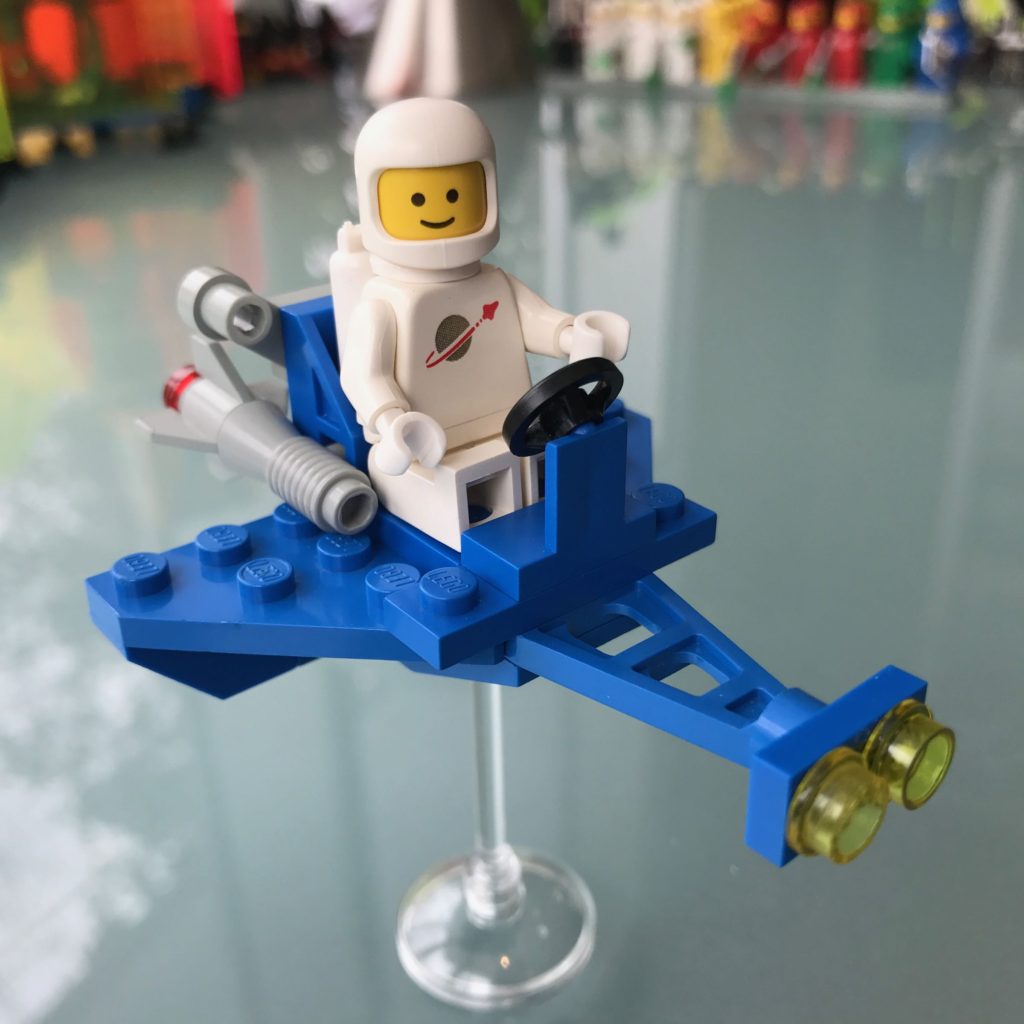
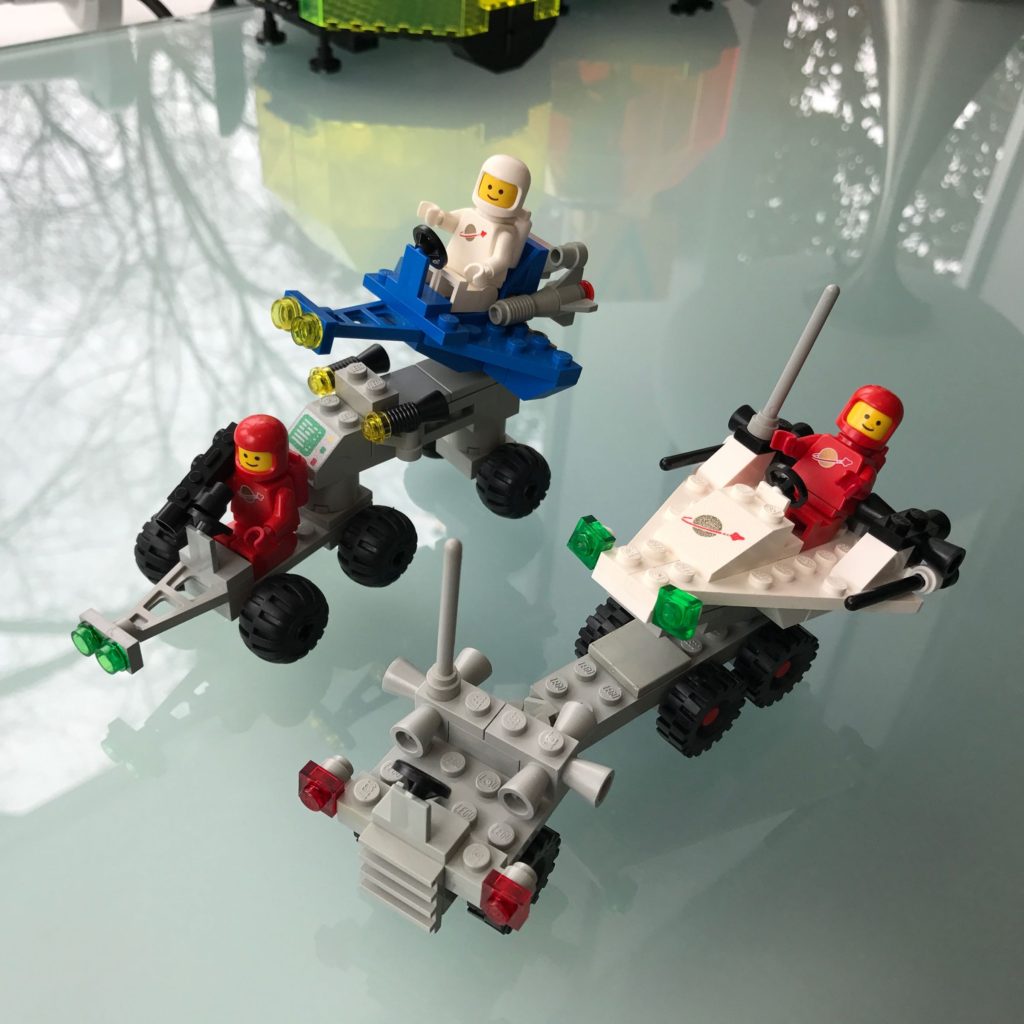
Star Patrol Launcher (1984) vs Space Probe Launcher (1981)
Lunar Rocket Launcher (6881)
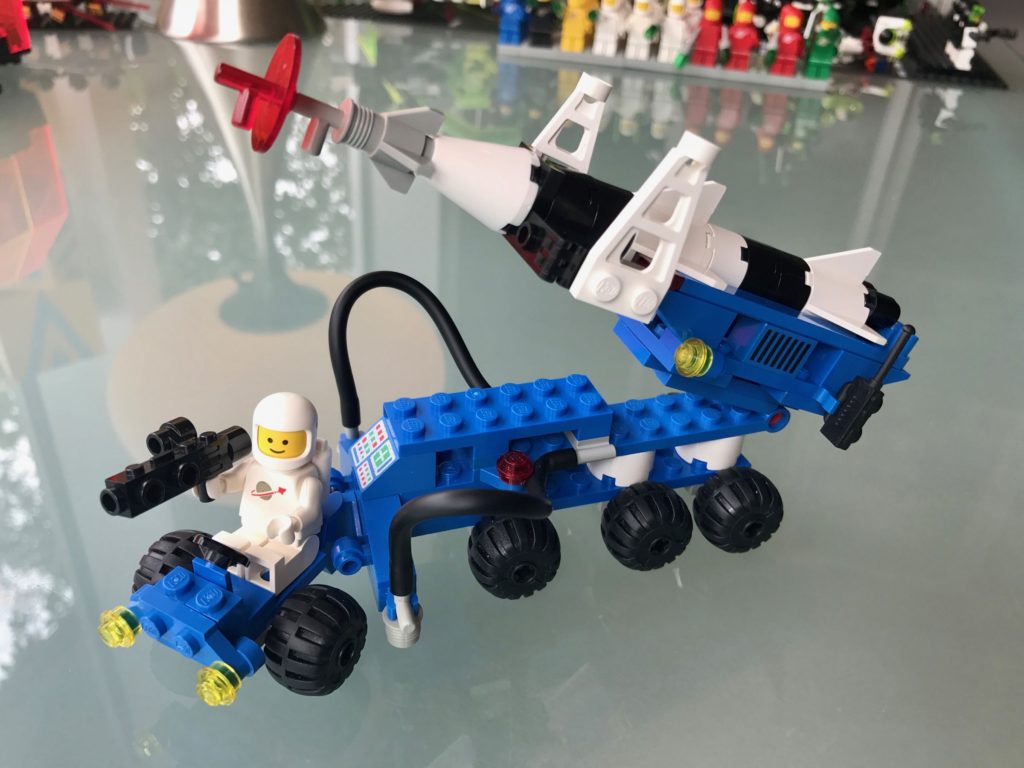
Features: Articulated vehicle that carries a rocket on the trailer. Comes with one astronaut and a video camera/bazooka and a walkie-talkie for accessories.
Thoughts: Third iteration on the mobile rocket launcher concept. Hoses are a nice touch. ❤️ the rocket tip. The rocket is much more robust compared to the 1978 original. Again, nice to see a computer terminal.
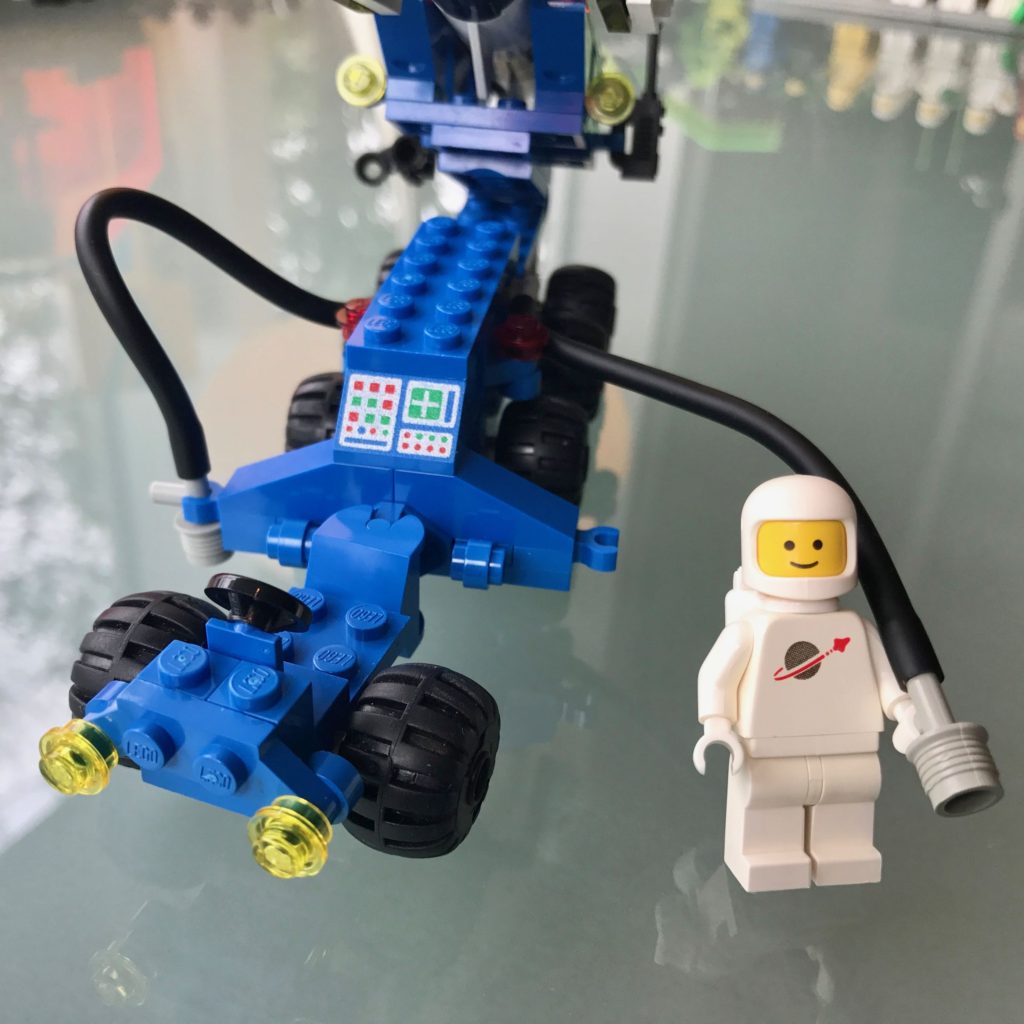
Twin hoses for refueling
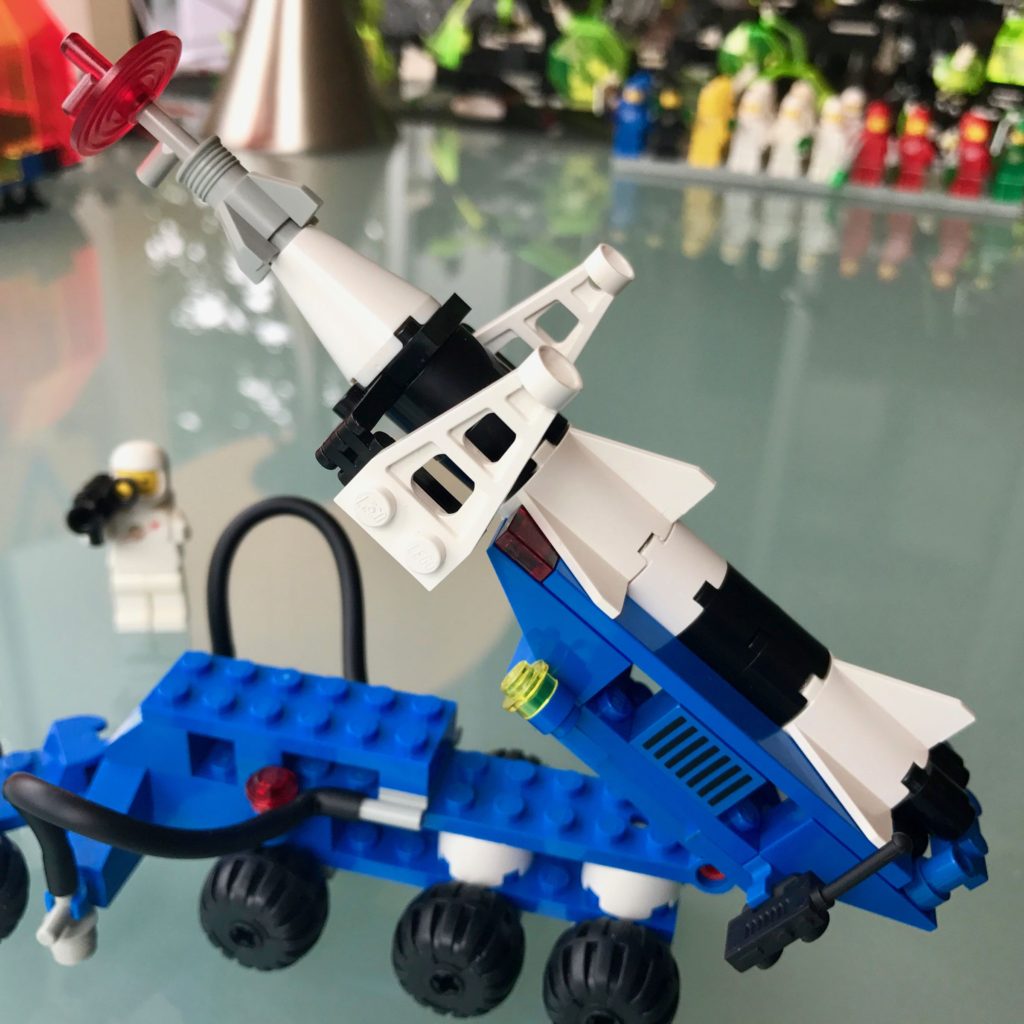
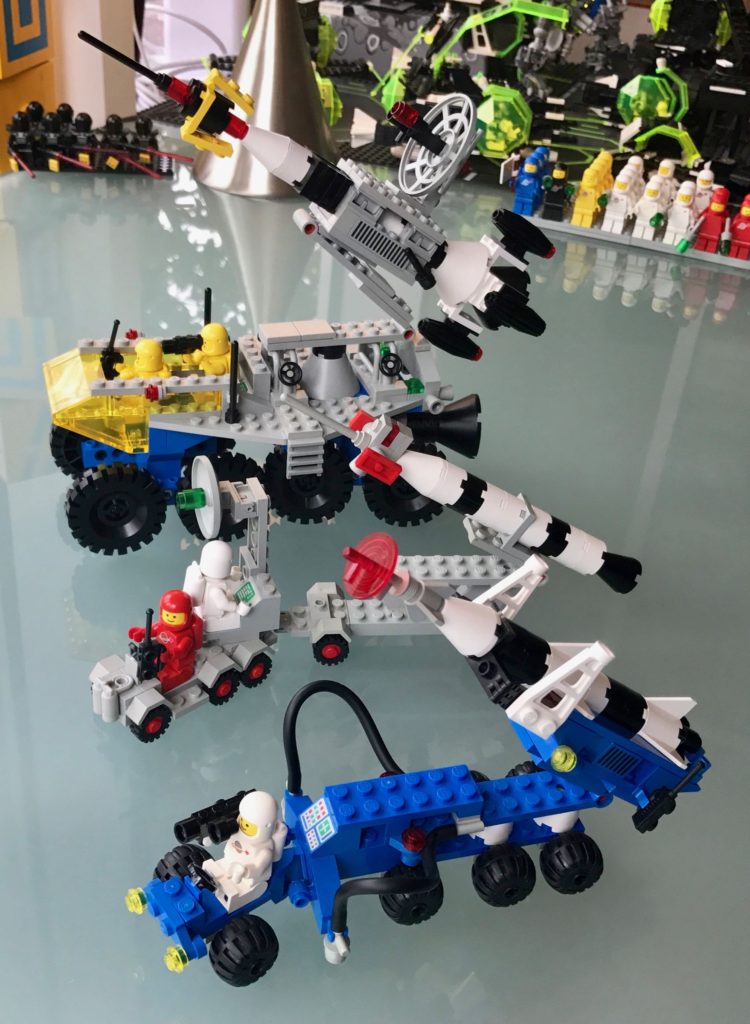
Mobile Rocket Launchers 1978-84
Uranium Search Vehicle (6928)
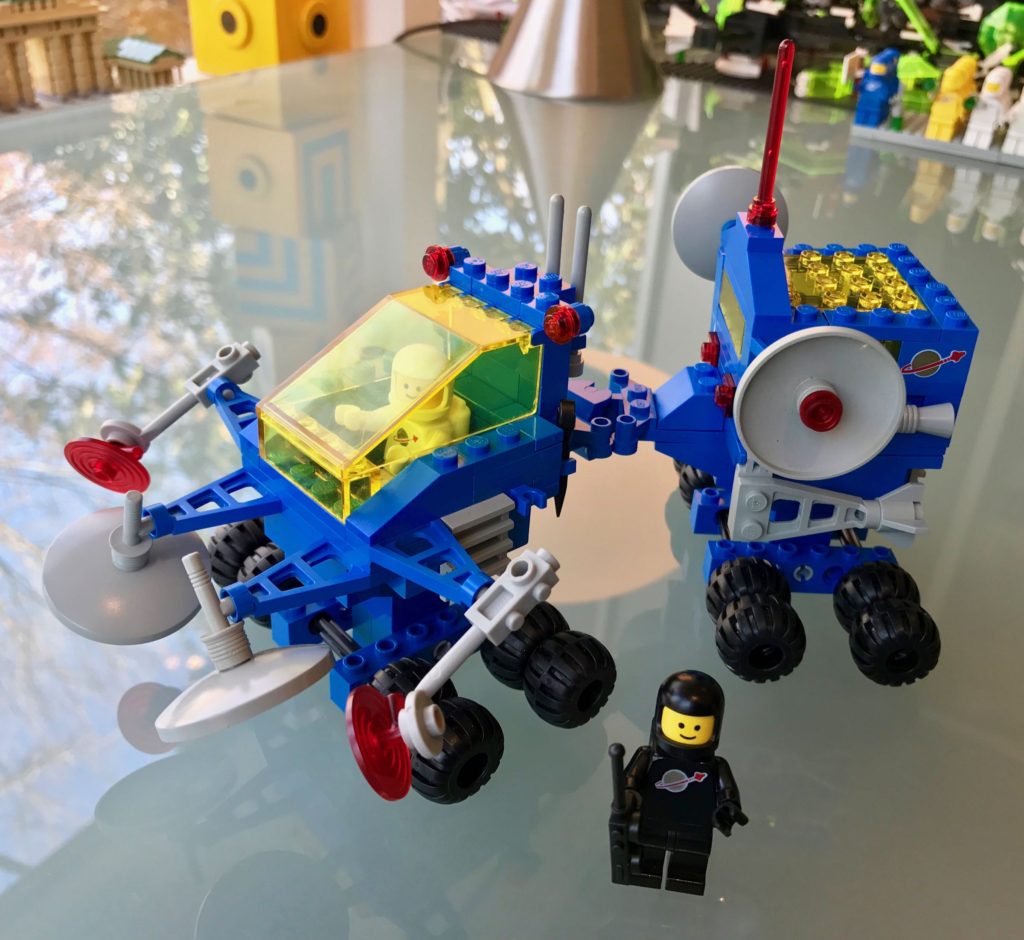
Features: Jointed ground vehicle with a plethora of wheels and sensor arrays. Rear trailer has doors and roof that open to reveal a computer terminal. Comes with two astronauts.
Thoughts: I ❤️ this mobile lab! First black astronaut. Possibly my new fave. Sort of a cross between Surface Explorer (6880) and Mobile Lab (6901). I love the retro color scheme and all the little details such as the ladders for the astronauts to mount both the cab and trailer.
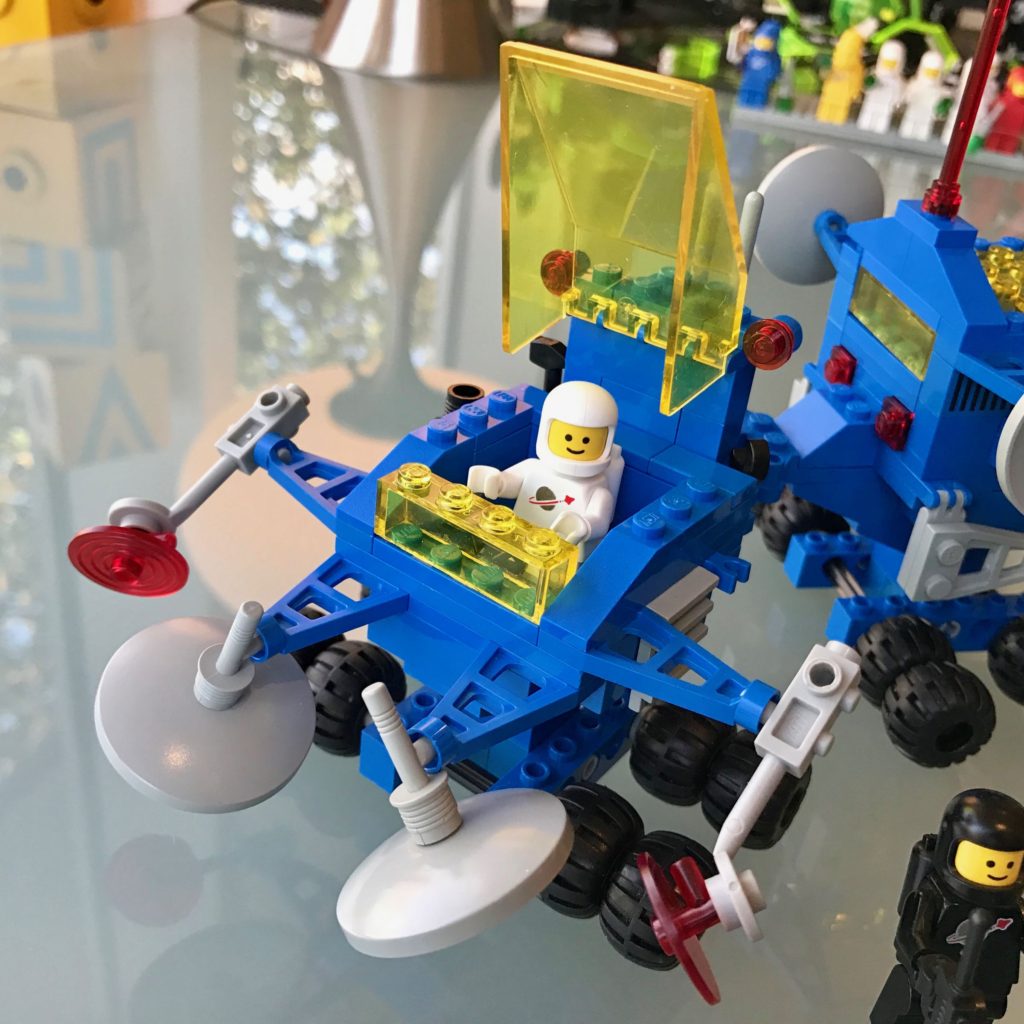
Front cab with four sensor arrays
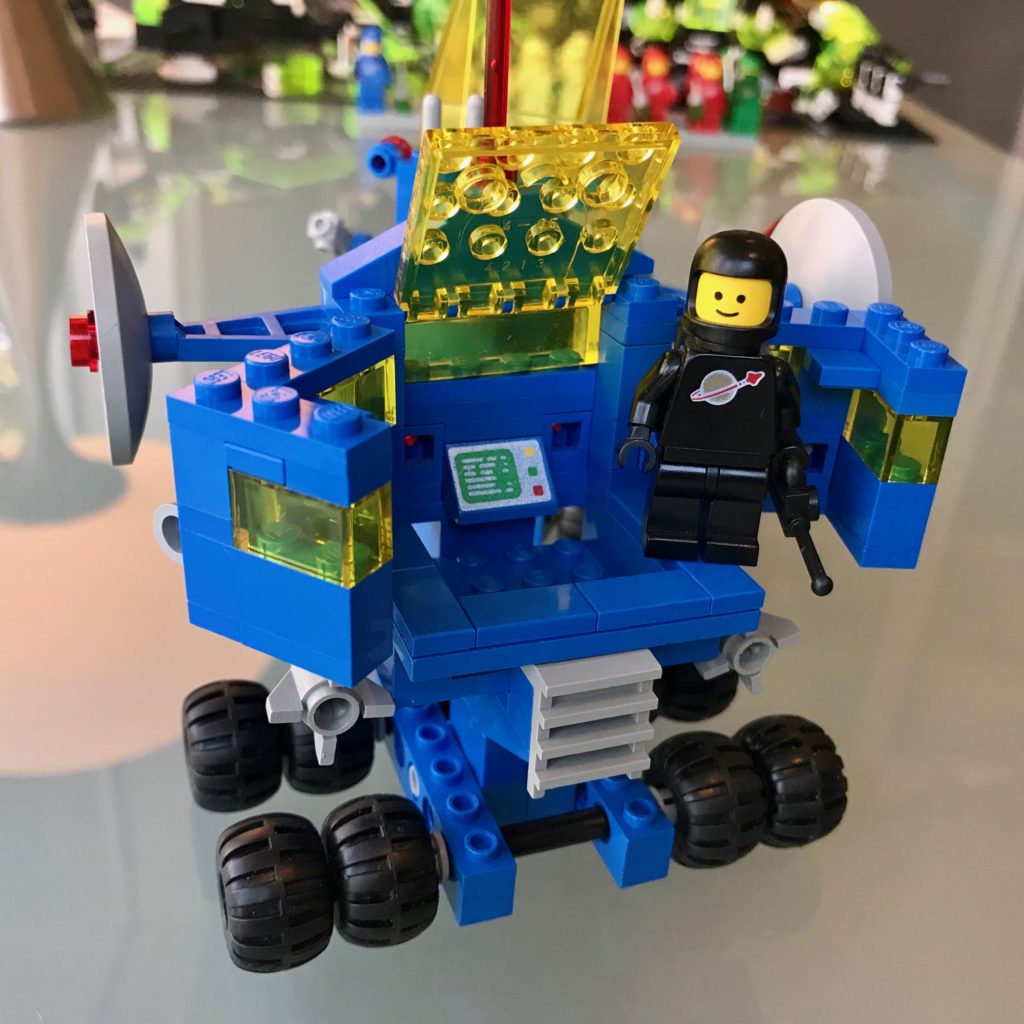
Rear lab with computer terminal
Robot Command Center (6951)
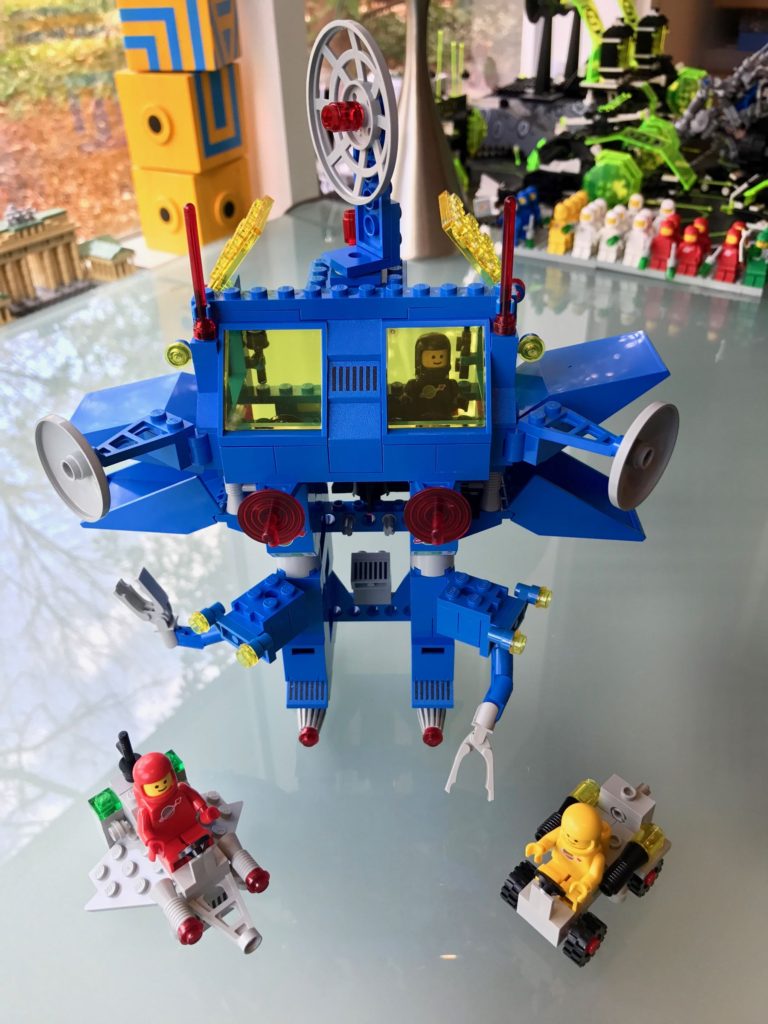
Features: Rover, scooter, rocket, and three astronauts all in a robot-shaped base!
Thoughts: Goofy and awesome in a 60′s sci-fi B-movie way. Who wouldn’t want a space base shaped like a top-heavy robot on skates with side beaks and arms on the legs?
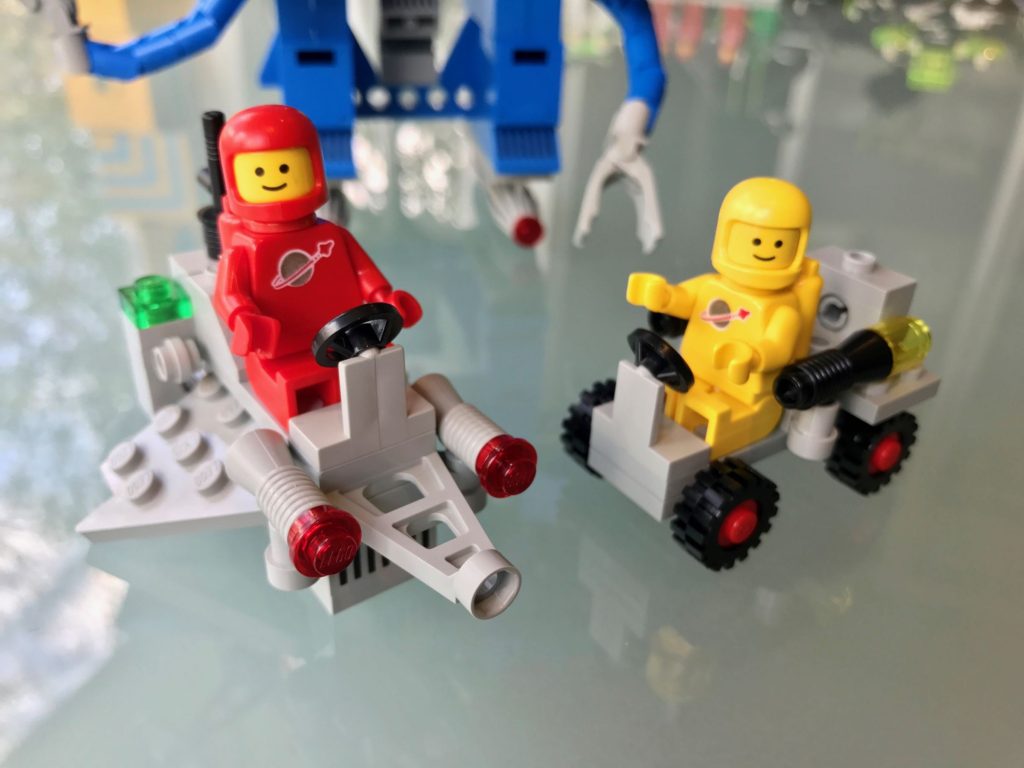
Scooter and rover
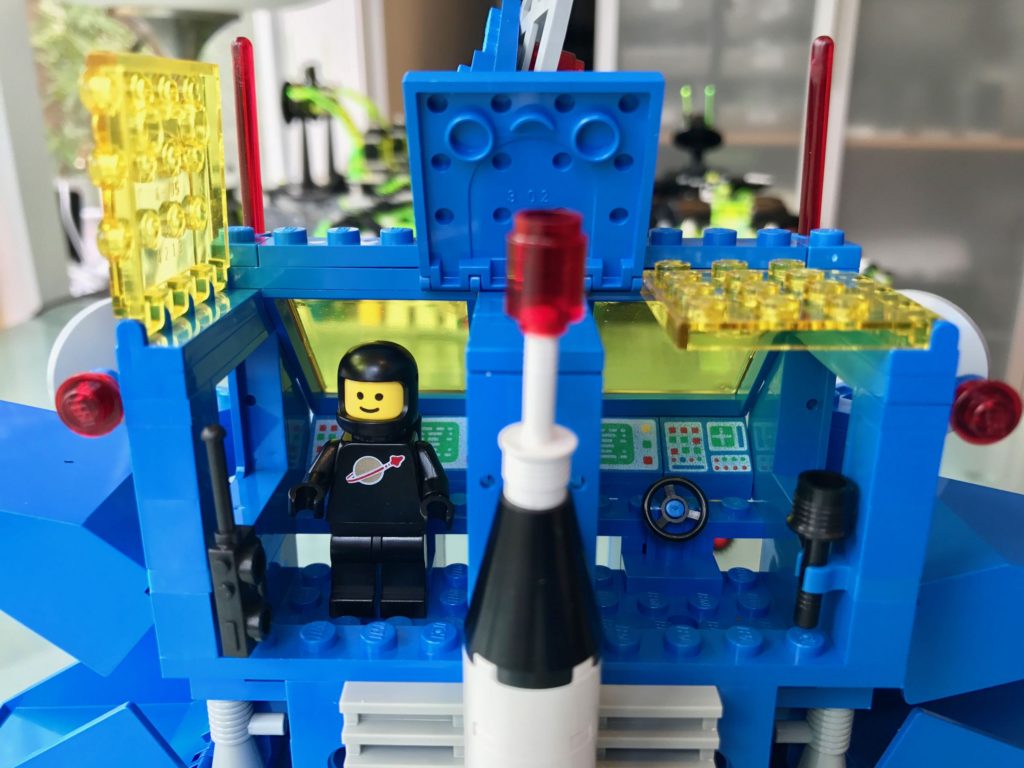
Cockpit has plenty of computer terminals, room for two astronauts, and storage for two accessories. Plus twin sun roofs!
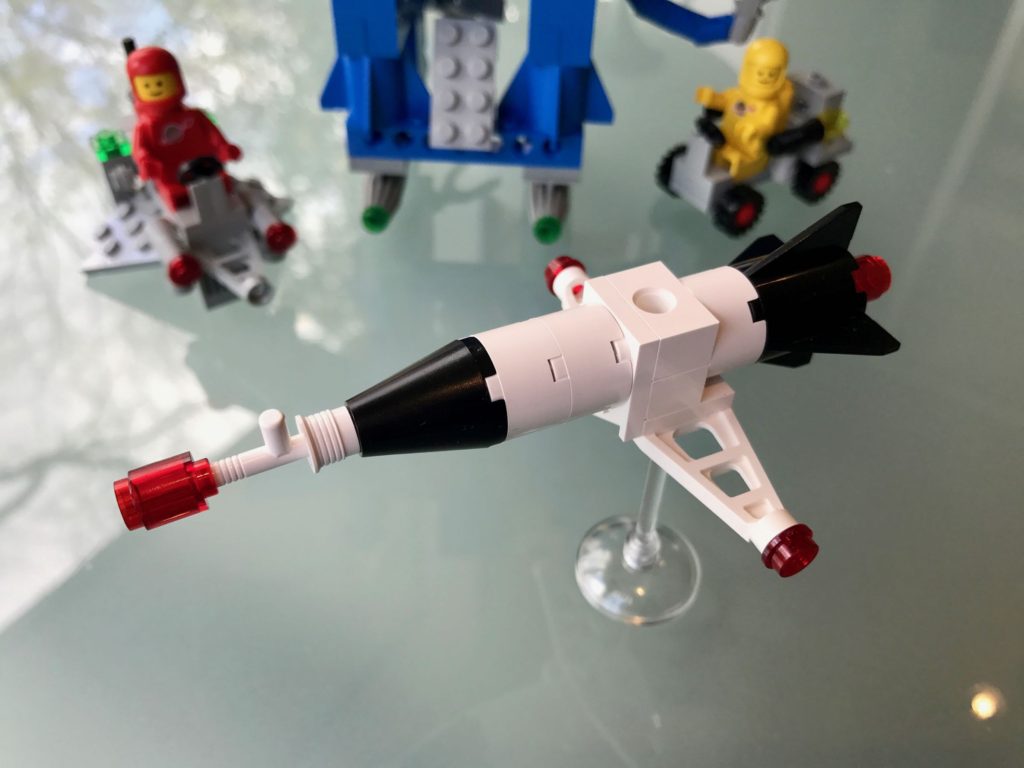
Rocket
Inter-Galactic Command Base (6971)
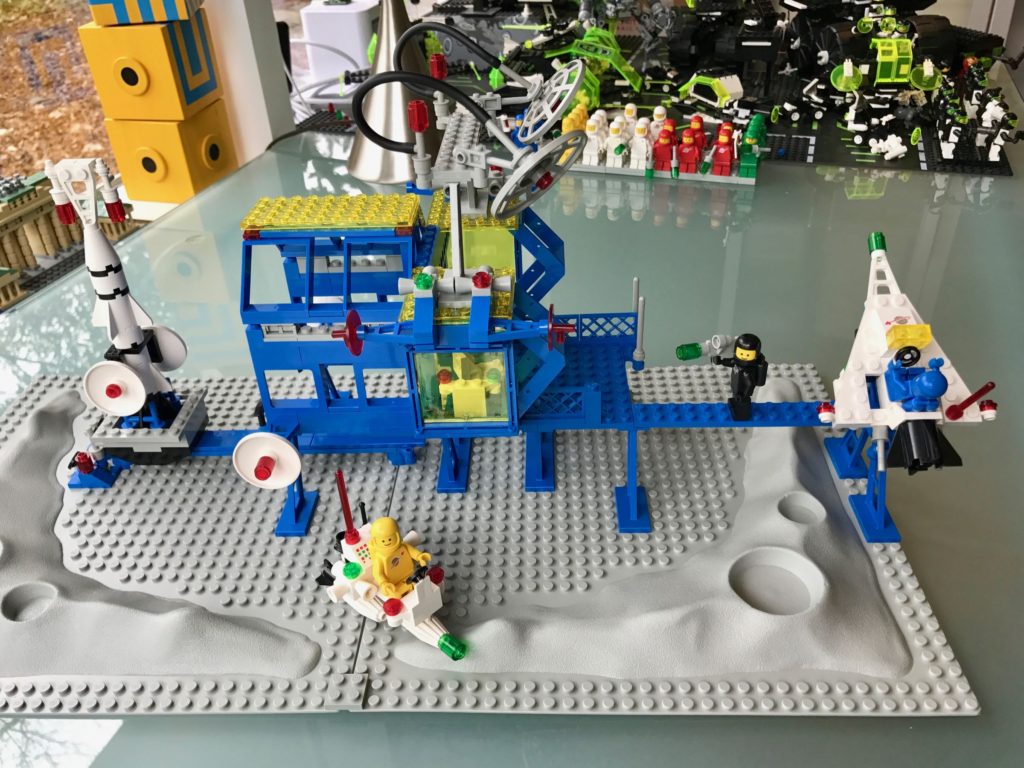
Features: Base with computers, sensors, opening roof for rocket repairs, rocket, scooter, spaceship and three astronauts.
Thoughts: 💯 This was the refresh of 1980′s Beta-I Command Base (6970). Many interesting parts debuted over the four years between them.

Rocket in the repair bay
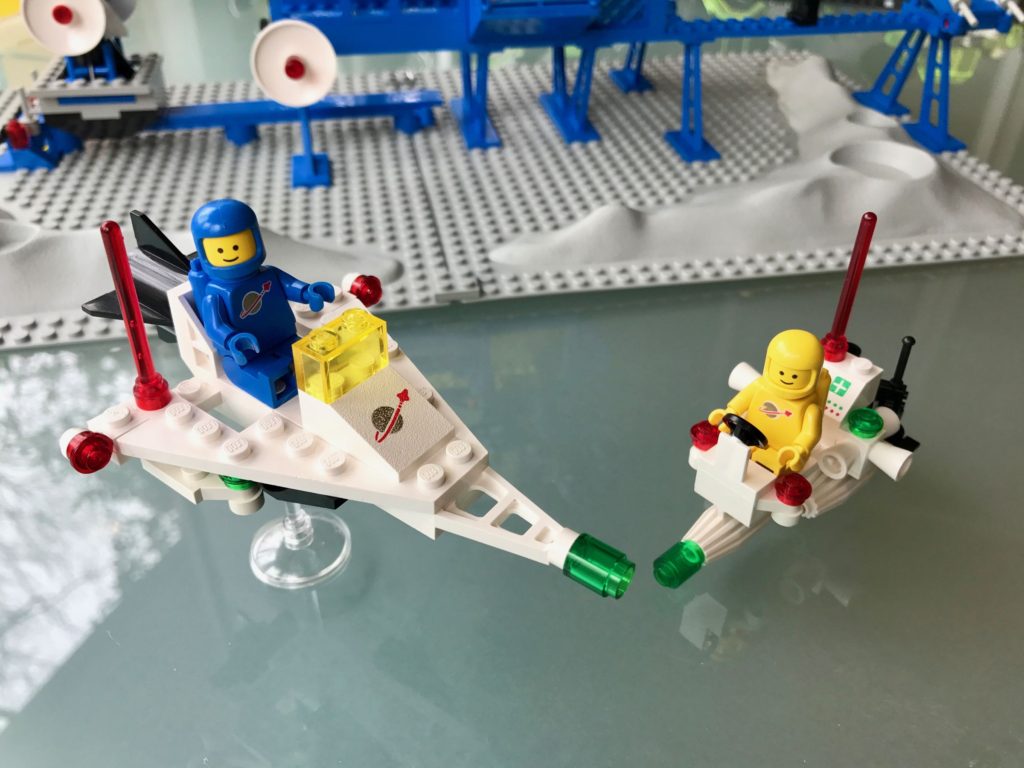
Spaceship and scooter. No ground rover this time.

End-on view of the base and twin radar arrays
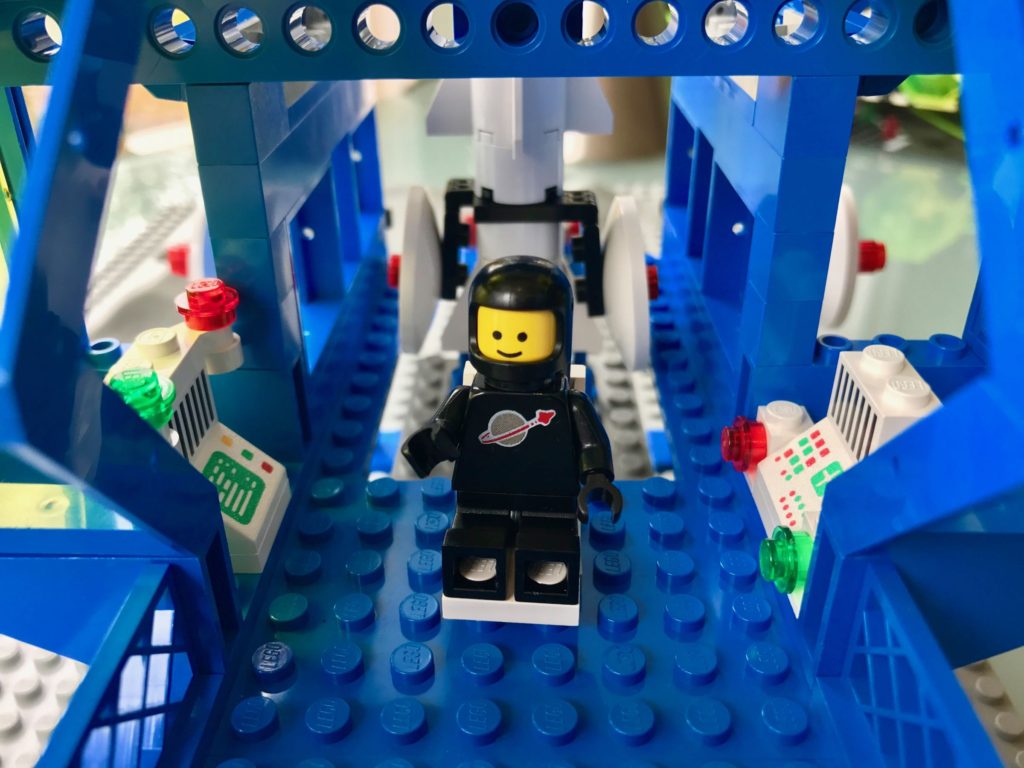
Inside the base are a pair of computer terminals
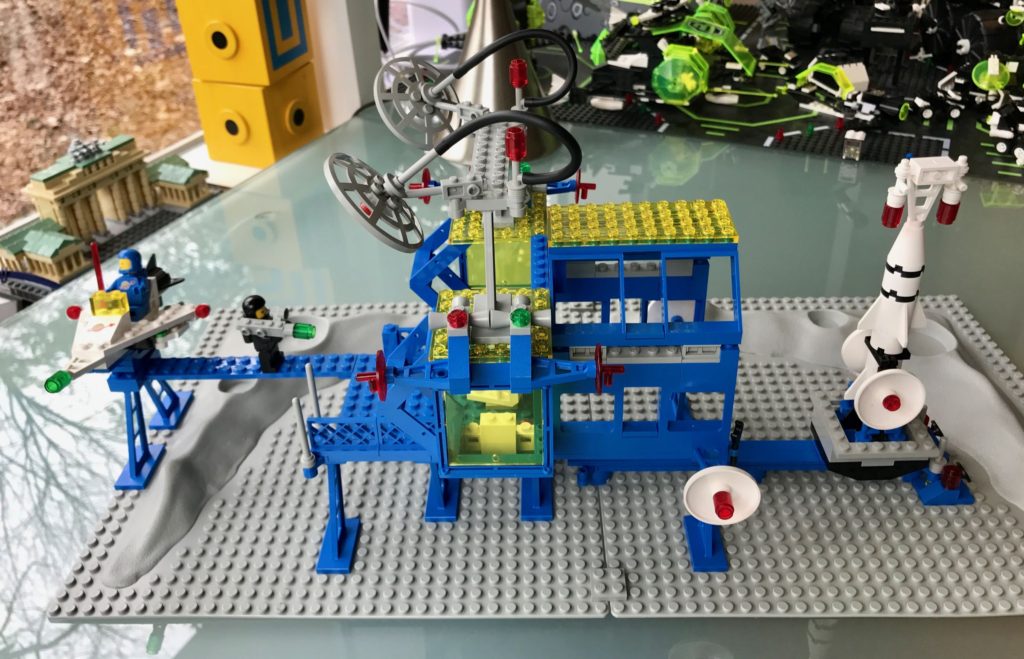
Back side view
Wrap-Up
These eight sets in my opinion form one of the strongest years of Classic Space set releases. Uranium Search Vehicle, Robot Command Center, and Inter-Galactic Command Base are all highlights.
Next: Space 1985!
